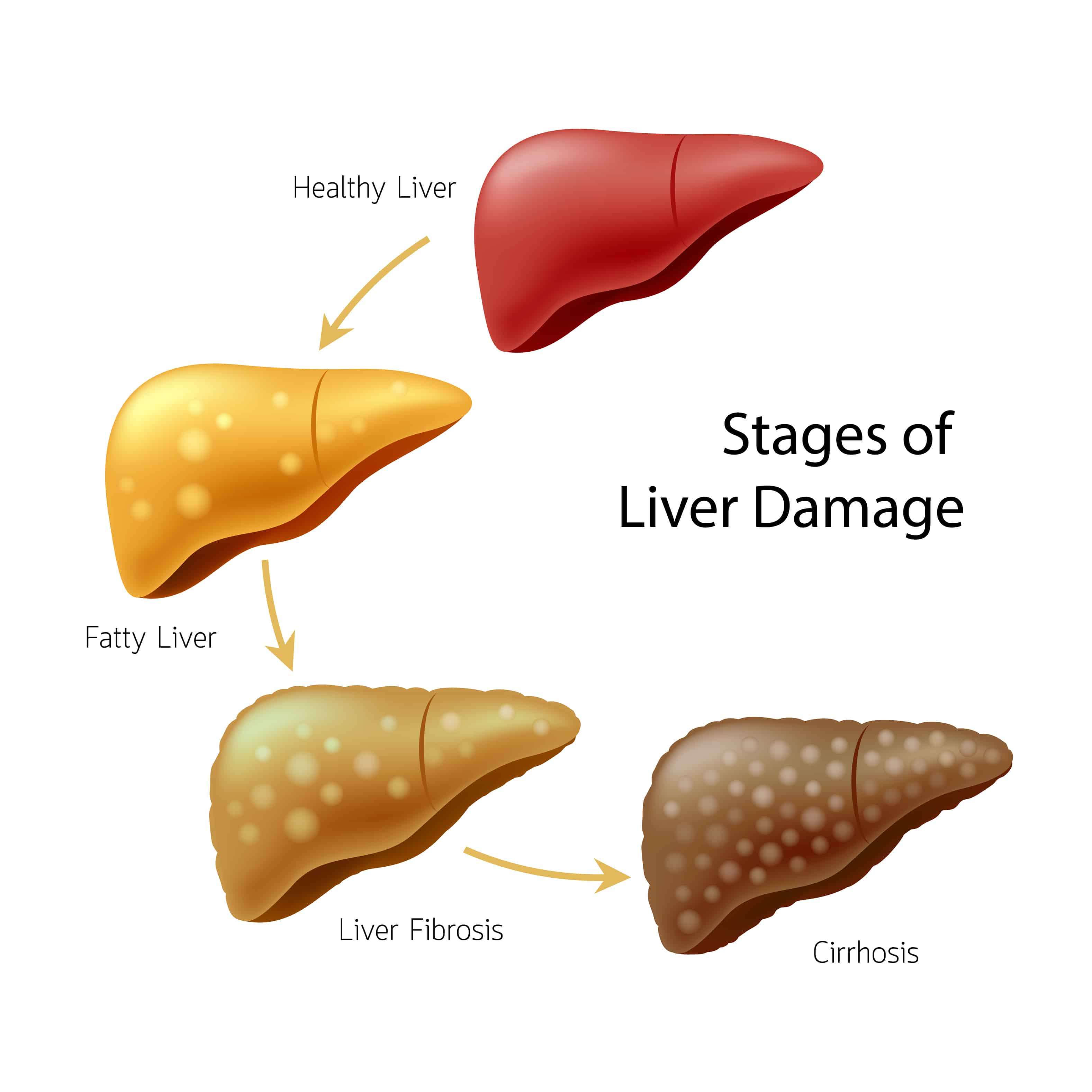
Many people equate liver disease with alcohol use. While there is certainly a direct link to alcohol abuse and liver disease, it’s not the only factor that contributes to liver disease. Cirrhosis (permanent scarring) is the end stage of chronic inflammation within the liver from long-term damage. Undiagnosed liver disease often leads to liver failure or cancer. That’s why it’s important to understand the causes, symptoms and treatment options for this condition. Although it generally cannot be reversed, there are steps you can take to slow down the progression of the disease.
Causes of Cirrhosis
The most common conditions that lead to cirrhosis include chronic alcohol use, viral hepatitis B or C, and non-alcoholic fatty liver disease. Some less common causes include cystic fibrosis, autoimmune liver disease and an abnormal accumulation of iron in the body.
Cirrhosis caused by excessive alcohol consumption usually occurs after a decade or longer of alcohol abuse. However, some people are more prone to developing the disease and may begin to develop scar tissue earlier. In addition, women face a greater risk of developing cirrhosis than men.
Those with chronic hepatitis B or C who don’t seek treatment are at risk for developing cirrhosis after about 20 years. Non-alcoholic fatty liver disease usually occurs in people with obesity and may progress to cirrhosis in about 10-20 years.
Symptoms of Cirrhosis
This condition often goes unnoticed in the early days, since most symptoms don’t occur until there is substantial damage to the liver. As cells die and scar tissue begins to take over, it’s typical to experience fatigue, weight loss, weakness, and loss of appetite. Late stages manifest as increased bleeding and bruising, yellowing of the skin and eyes, and fluid accumulation in the legs and abdomen. Certain lab abnormalities may point toward a diagnosis of cirrhosis. These typically include elevated liver chemistry tests, low platelet counts, elevated INR (International normalized ratio) or abnormally low LDL (low-density lipoprotein) cholesterol level.
If untreated, you can grow more sensitive to drugs and experience behavioral or personality changes like lack of sleep, forgetfulness and constant confusion.
If you are experiencing any of these symptoms, speak to a doctor or gastroenterologist. You should expect blood tests, imaging studies (CT scan or ultrasound) and occasionally a liver biopsy before the diagnosis can be confirmed.
Treatment Options
There is no cure for cirrhosis. However, there are ways to slow down the progression of the disease depending on the stage of the condition. After being diagnosed in the early stages, patients will most likely be recommended a low-sodium diet, weight loss and avoiding medications/drugs that damage the liver (alcohol, high doses of acetaminophen). Patients should also avoid excessive use of over-the-counter drugs or herbal supplements without consulting their gastroenterologist first.
If caused by hepatitis, antivirals can help. Newer antiviral medications can completely eradicate hepatitis C in as little as eight weeks. Hepatitis B can be controlled, but there is no cure.
Patients with non-alcoholic fatty liver disease are usually recommended to lose at least 10 percent of their weight and control any other underlying diseases (diabetes, hypertension, etc.). There is evidence that consumption of black coffee may help ease symptoms in the early stages of the disease.
Most patients with cirrhosis will need a semi-annual CT scan or ultrasound to ensure they do not develop liver cancer. Additionally, they may need medications or repeated upper endoscopies to prevent a life-threatening bleeding from veins in the esophagus (called esophageal varices).
If the disease progresses to a point in which the liver is near failure or if the patient develops liver cancer, a liver transplant may be the only treatment. According to the American Liver Foundation, people who have a liver transplant have an 86 percent chance of surviving after one year. However, there is a risk that the new liver may redevelop this disease or fail if the underlying disease that caused cirrhosis is not controlled.
Prevention
In order to avoid developing cirrhosis, patients must limit themselves to no more than one or two alcoholic drinks per day. However, cutting out alcohol entirely is a safer bet. To avoid infection from hepatitis B or C, patients should not use illegal drugs, which contributes to a higher risk of using unsterile needles. Patients with obesity or diabetes should focus on weight loss and controlling their blood sugar levels. Early liver disease can be controlled or possibly reversed with most patients living a normal life.


